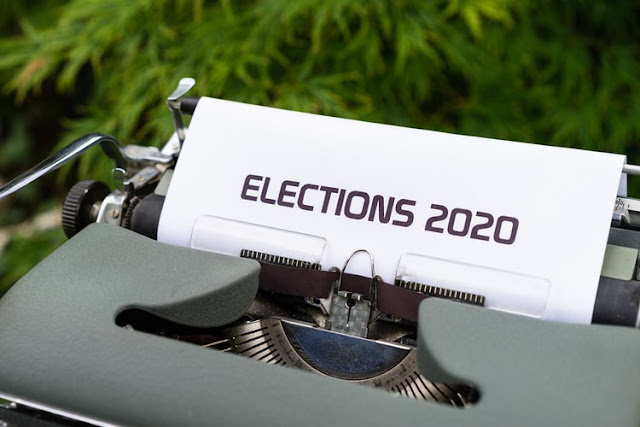US Election Vocabulary: Electoral college? Battleground states?
US presidential elections are not decided by the popular vote (counting the number of votes obtained nationally for each candidate). Each voter votes for a state representative to allocate a vote for the president and vice president in what is called an electoral college.
The number of delegates sent to the electoral college is decided by the population of the state. Thus the largest delegations come from the most populous states: New York, California and Texas.
Most states are comfortably red (Republican) or blue (Democrat) - see here. This means that presidential elections are essentially fought over a small number of purple or battleground states which swing between parties in different election cycles.
Ohio was the classic example of a swing state. It voted for the victor in every election from Kennedy's victory in 1960 to Trump in 2016. 2020 broke this pattern when the state voted for Trump over Biden
Under the electoral college system a candidate can lose the popular vote but still become president. This was the case in the 2000 and 2016 election. The distribution of votes is as important as the raw numbers.
What is the electoral college?
States send delegates to the electoral college according to the state vote - with 48 out of 50 using a 'winner takes all system'. Only in Maine and Nebraska are the delegates allocated proportionally.The number of delegates sent to the electoral college is decided by the population of the state. Thus the largest delegations come from the most populous states: New York, California and Texas.
Most states are comfortably red (Republican) or blue (Democrat) - see here. This means that presidential elections are essentially fought over a small number of purple or battleground states which swing between parties in different election cycles.
Ohio was the classic example of a swing state. It voted for the victor in every election from Kennedy's victory in 1960 to Trump in 2016. 2020 broke this pattern when the state voted for Trump over Biden
Under the electoral college system a candidate can lose the popular vote but still become president. This was the case in the 2000 and 2016 election. The distribution of votes is as important as the raw numbers.
What is the 'ground-game'?
The ground-game is ensuring that your supporters voters get to the polling stations to cast their votes. This can involve providing transport or repeated reminder calls. It requires large numbers of local volunteers interact directly with the voters.In 2020 the Covid crisis lead to a large extension of 'absentee' or postal ballots. This has caused controversy with claims of voter inflation from some Republicans and suppression from a number of Democrats.
More broadly, claims of electoral fraud resulted in the civil disturbance on Capitol Hill in January 2021

